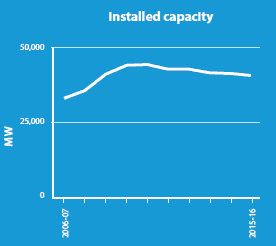The Finkel Report for National Energy Market security was released last week. Chief Scientist Alan Finkel’s review of the NEM included 50 recommendations, one of which was the implementation of a “generator reliability obligation” which could have serious ramifications for the cost of renewable energy in Australia. The closing of ‘dirty’ coal-fired power plants such as the 1600MW Hazelwood earlier this year has put a large dent in our installed capacity, which has been slowly sinking as we attempt to transition to renewable energy in an attempt to meet our 2030 Renewable Energy Targets (RET).

Finkel Report
According to the Sydney Morning Herald, under Finkel’s recommendations, the average household would save $90 per annum on their electricity bills over the decade from 2020-2030. This would be through the implementation of Finkel’s ‘Clean Energy Target’ – as opposed to a ‘business as usual’ situation. The report, which you can read by clicking here, notes that the value of Australia’s wholesale electricity market trades $11.7 billion. There are 9.6 million metered customers and, with rapidly increasing electricity prices it is obvious that something needs to be done. Balancing the price of wholesale electricity and the reliability of the grid whilst trying to meet climate change obligations is a very tricky and delicate process.
In an attempt to mitigate this, there are some repercussions for solar. The “Generator Reliability Obligation” and some changes to new wind and solar plants could pose serious problems for the next 10 years of renewable energy in Australia. Firstly, Finkel advised that plants be equipped to provide voltage and frequency response, which is reasonable. But the big one is a very controversial recommendation that individual wind and solar farms be self-reliant to provide ‘dispatchable generation‘ (i.e. backup power) – rather than looking at more holistic/system-wide solutions. Even though many solar farms are being built with battery storage a ‘hard and fast’ rule like this could have implications for investment in large solar in the future (as battery storage costs have been shrinking, they are still significant).
The Finkel Report and the “Generator Reliability Obligation”
Kane Thornton, CE of the Clean Energy Council (the CEC represents businesses involved in solar and wind renewable energy generation) was quoted as saying – “Many new renewable energy and energy storage technologies and solutions are now available to help manage energy security”. Many large-scale solar plants being built these days are including battery storage
We don’t want a repeat of the the blackouts that plagued South Australia last year so it is understandable that energy security remains paramount whilst our energy economy transitions. It’ll be interesting to see which recommendations are taken on board and which aren’t – but I think the ‘generator reliability obligation’ could prove to be more trouble than it’s worth if it stifles innovation and curbs investment with blanket rules on new solar plants.
With the proposed $16.5b Carmichael coal mine by Adani Mining still being discussed (the mine is expected to produce 2.3 billion tonnes of coal over 60 years), it seems like we are reaching a flashpoint with regards to the crossroads of global warming, employment, and profit. The rest of 2017 promises to be a very interesting time for Australians and their electricity.

